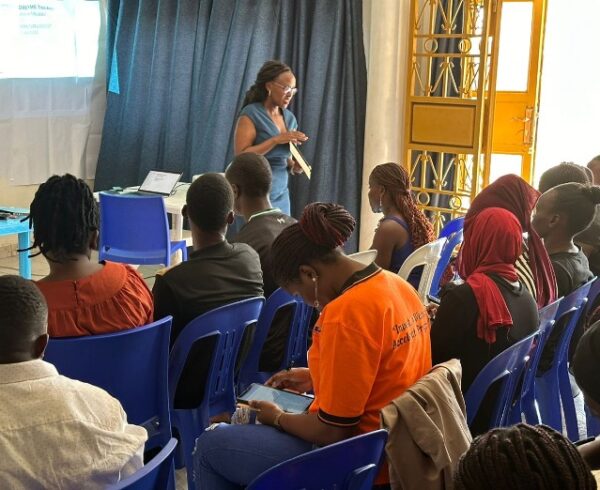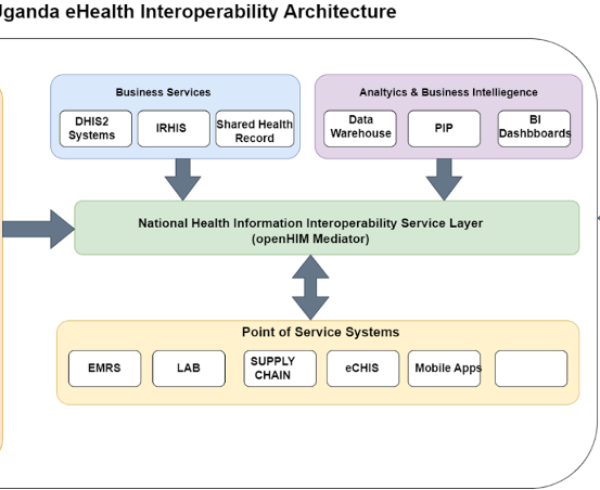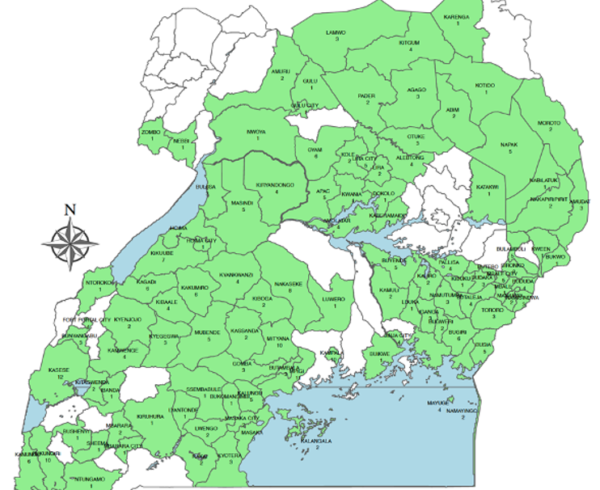Thirty representatives of the sixteen CDC supported Implementing Partners (IPs) converged at the Monitoring and Evaluation Technical Support (METS) Program office on 20th January 2016 in a bid to demystify the MER 2.0 tool kit. MER 2.0 is a set of PEPFAR indicators that focus on HIV Prevention & Support, Knowing HIV Status, On ART and Viral Suppression. The orientation was conduct by members of the MIS team from METS; Mr. Eric Munyambabazi, Mrs. Jennifer Balaba-Bogere and Mr. Herbert Mulira.
Dr. Jennifer Galibraith, from CDC Uganda noted the need for the IPs to work together for the sake of achieving more. She applauded the different teams for the work done this far and that she was looking forward to the work ahead.

CDC’s Jennifer Galbraith making her remarks
Those in attendance included representatives from AMREF, Children AIDS Fund, Infectious Disease Institute (IDI), Baylor Uganda, Mildmay Uganda, Reach Out Mbuya, TASO Uganda, Makerere University Joint AIDS Program (MJAP), Rakai Health Sciences Project (RHSP), Uganda Prisons, Uganda Catholic Medical Bureau, Uganda Protestant Medical Bureau and Medical Access.

Some of the IP representatives that attended the Orientation
Overview of PEPFAR MER 2.0
The President’s Emergency Plan for AIDS Relief (PEPFAR) focus on impact in individuals and communities is the driving force for an effective framework that not only monitors outputs from the program but also key outcomes. PEPFAR is partnering with the international community – such as Uganda to drive towards the UNAIDS 90-90-90 global goals: 90 percent of people living with HIV know their HIV status, 90 percent of people who know their HIV status are accessing treatment, and 90 percent of people on treatment have suppressed viral loads.
In addition to the treatment indicators, the program will continue to measure our prevention goals, including through Voluntary Medical Male Circumcision and in 2017 moving the key DREAMS (Determined, Resilient, Empowered, AIDS-free, Mentored, and Safe) indicators into the Monitoring, Evaluation and Results (MER). The MER indicators additionally monitor HIV/TB indicators that will continue to drive the implementation of TB Preventive (IPT) policy.

“Reporting quarter regulations differ for different mechanisms, hence it is important to use the required regulations as provided by National, CDC or PEPFAR” Mrs. Jennifer Balaba-Bogere
Given the global HIV progress over the past decade, planning, monitoring and resource allocation needs to occur at district and community levels in order to have the most impact. Collection and use of data that represents populations served and geographic areas down to the site level where the services are being offered are critical in understanding current program performance and planning for future performance. The indicators continue to evolve to reflect the evolution of the USG support to measure both the impact of National and Regional support through host governm
nts down to direct services at the site.
The PEPFAR MER 2.0 Indicators focuses on the following:
- Reduction of indicators to focus program monitoring on what matters most for epidemic control
- Standardization of age, sex and key population disaggregation across prevention and clinical cascades to monitor which populations are being reached with high quality evidence-based services, and to identify which populations are not being reached
- Continuous alignment of indicators with multilaterals and partner governments to avoid duplication of data collection where possible and to focus on improved data quality and programmatic quality
- Aligned frequency of reporting across indicators to ensure that results are actionable within the period that they are reported
- Input from community stakeholders, technical experts, implementing partners, and field staff
- Alignment with other PEPFAR data streams such as site improvement of monitoring systems, expenditure analysis and the sustainability index






